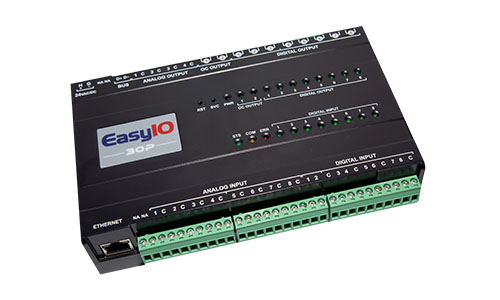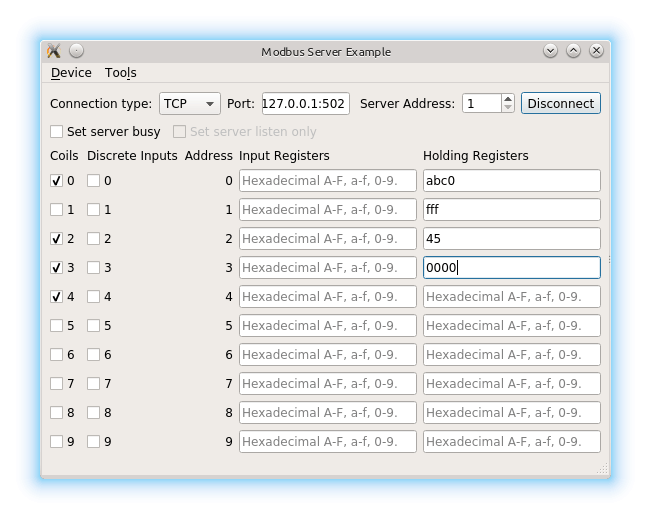

*Note: We have reached out to the Modbus organization to rename the master/slave terminology so it can be updated in the Telegraf configuration. # Digital Variables, Discrete Inputs and Coils # Maximum number of retries and the time to wait between retries # Slave ID - addresses a MODBUS device on the bus
MODBUS SERVER OPEN SOURCE SERIAL
# via serial line communication in binary (RTU) or readable (ASCII) encoding # The module supports connections to PLCs via MODBUS/TCP or As for the analog variables, the name, byte_order, data_type, scale, and address need to be configured for each metric you are collecting from your holding_registers and input_registers.īelow is a sample configuration for the Modbus Input Plugin that can be used in Telegraf to retrieve Modbus metrics.

This is done by configuring their variable name ( name) and variable address ( address). To take advantage of the Modbus plugin, you need to determine the metrics that you wish to collect from your device by configuring the digital variables from your discrete_inputs and coils. Like most Telegraf plugins, the Modbus input plugin does not require exhaustive configuration. You can use the Telegraf Modbus Input Plugin to collect the data from Discrete Inputs, Coils, Input Registers and Holding Registers via Modbus TCP or Modbus RTU/ASCII. You may also ask: What’s the difference between Modbus input registers and holding registers? Input registers are read-only, while holding registers can be read or written. Coils are usually associated with relay outputs. You might be wondering: What’s the difference between Modbus coils and discrete inputs? Coils can be read or written, while discrete inputs are read-only. Coil/Register Numbers can be thought of as location names since they do not appear in the actual messages their data addresses are used in the messages. The coils and registers each have a read-only table and read-write table with a maximum of 9999 values. The secondary device stores information in 4 different tables: two tables store on/off discrete values ( coils) and two store numerical values ( registers). How do I retrieve data from my IoT devices that use Modbus?Ī little background from Simply Modbus on how data is stored in standard Modbus.

Over 7 million Modbus nodes have been reported by industry analysts in just North America and Europe. Modbus has been implemented by hundreds of vendors on thousands of different devices to transfer discrete/analog I/O and register data between control devices. Since the Modbus is a royalty-free, open protocol, it has become one of the most widely used network protocols in the industrial manufacturing environment. The Modbus protocol is now controlled by, a US nonprofit trade association.
MODBUS SERVER OPEN SOURCE FREE
Modbus is open and free for manufacturers to build into their equipment without having to pay any royalties. It has become an ideal protocol for remote terminal units (RTUs) where wireless communication is necessary. Modbus is a messaging protocol for industrial devices that was developed by Modicon (now Schneider Electric) for main-secondary communication between these intelligent devices. We released a new Modbus input plugin in Telegraf 1.14 and in this blog I’d like to tell you more about that plugin and how you can use it. InfluxDB, Community, IoT, Developer, IIoT
MODBUS SERVER OPEN SOURCE HOW TO
How to Monitor Your Modbus Devices with InfluxDB


 0 kommentar(er)
0 kommentar(er)
